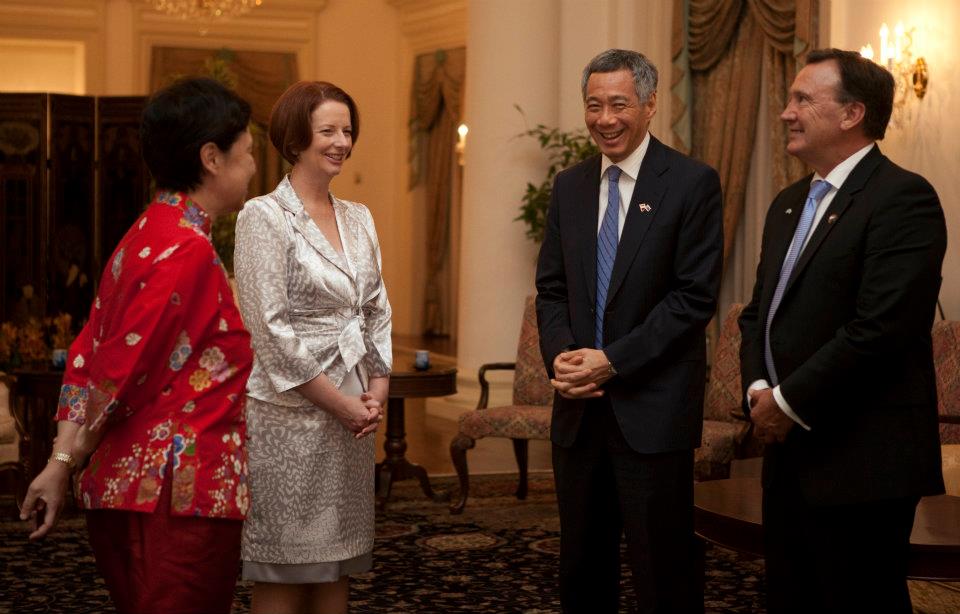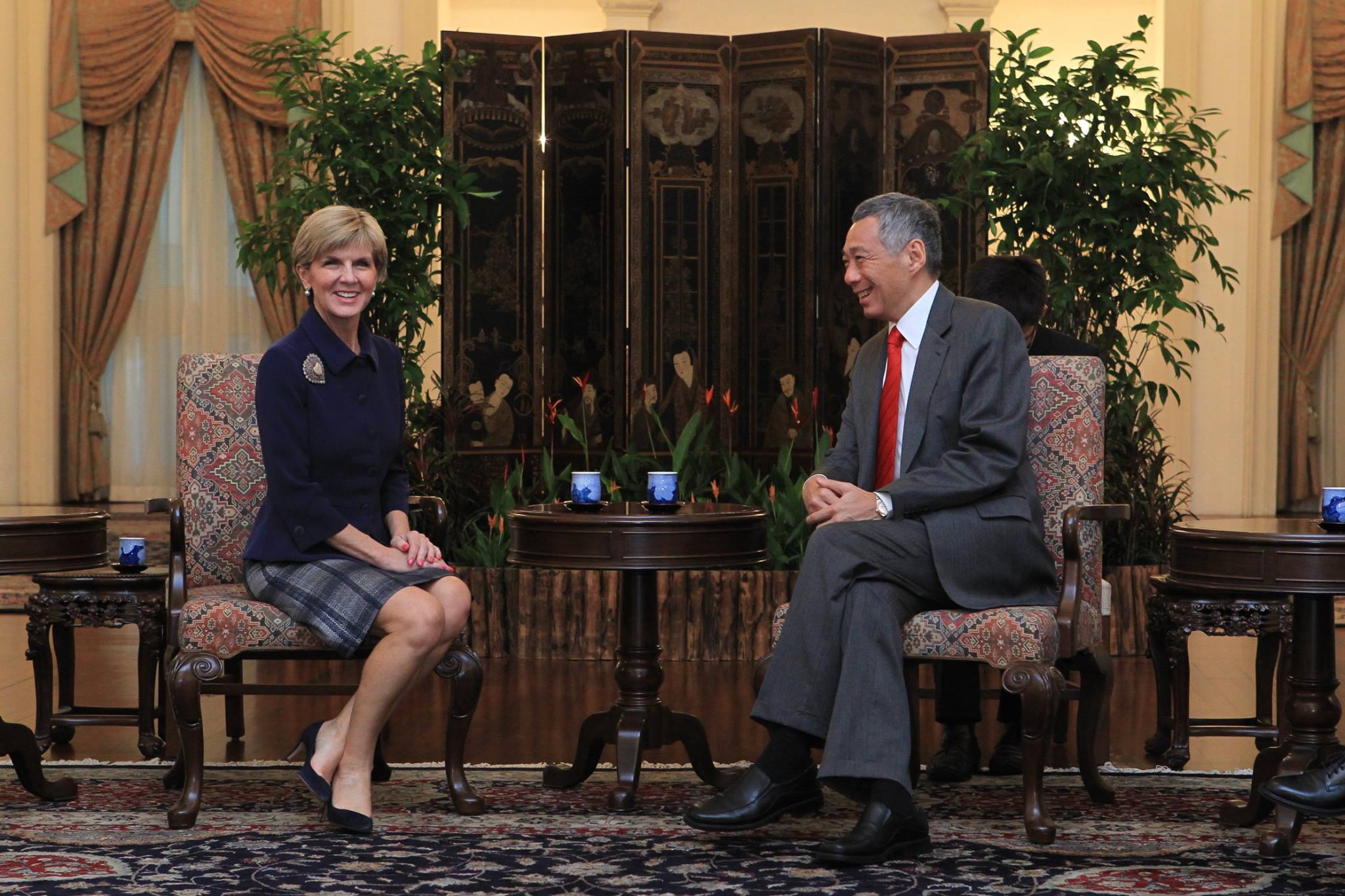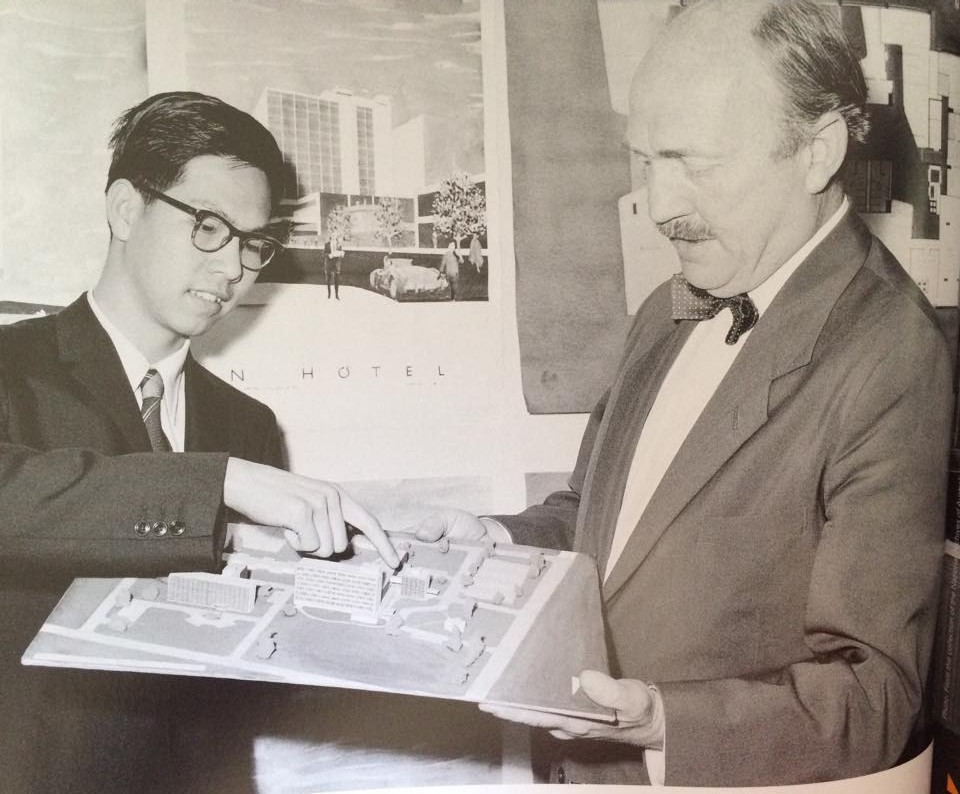Have you used the remark "no worries" before?
Do you know that "no worries" probably originated from Australia's "no worries, mate"?
Foreign Affairs and Law Minister K Shanmugam and the Singapore Zoo organised a housewarming party yesterday to welcome the four koalas and Australian Foreign Minister Julie Bishop to mark the 50 years of diplomatic ties between Australia and Singapore.
As Minister Chan Shan quipped about his new best mate - koala Chantelle - for having taken his name and being "cuter than him", here are five observations on why Australia is one of the best mates of S'pore:
1. The first country to organise such an extensive line-up of events for our SG50 celebration.
REALITY BITES: Get an eyeful of some of the Snuff Puppets set to perform as part of #SG50Oz (Australia in Singapore) celebrations. bit.ly/1L9iQdB
Posted by Channel NewsAsia Singapore on Wednesday, May 20, 2015
Under the 50 Bridges programme, various activities will be organised by the Australian High Commission until the end of this month, including puppet performances by Australian theatre company Snuff Puppets. Street artists will also paint murals on walls in 50 heartland locations.
The finale? The organising of 50 free Australian barbecues in one night.
And how many steaks will be served?
A total of 10,000 steaks, with the use of 200 bottles of tomato sauce, 150 bottles of Aussie BBQ sauce, plus 50 packs of table salt and ground pepper.
2. Australia was one of the first countries to forge diplomatic ties with Singapore after our independence in 1965.
 Source: Lee Hsien Loong Facebook
Source: Lee Hsien Loong Facebook
In a toast by Prime Minister Lee Hsien Loong at the dinner hosted in honour of then Australia Prime Minister Julia Gillard in 2012, he said,
"Australia was one of the first countries to recognise Singapore’s independence in 1965. For that we will always be grateful".
 PM Lee hosted PM Tony Abbott for breakfast at the airport in August 2014, as he stopped by on his way home from London. Source: Lee Hsien Loong Facebook
PM Lee hosted PM Tony Abbott for breakfast at the airport in August 2014, as he stopped by on his way home from London. Source: Lee Hsien Loong Facebook
Australia Prime Minister Tony Abbott is also expected to visit Singapore at the end of June to discuss a strategic partnership between both nations. This will be his second visit in four months, after attending the late Lee Kuan Yew's funeral service in March.
3. Australia and New Zealand are the two countries that held special parliamentary sessions for the late Lee Kuan Yew:
" width="560" height="315" frameborder="0" allowfullscreen="allowfullscreen">
This was the motion: "That the House record its deep regret at the death on 23 March 2015 of Lee Kuan Yew, former Prime Minister of Singapore, and place on record its acknowledgement of his role as the founding father of the modern Singapore and tender its profound sympathy to his family in their bereavement".
The House of Representatives of the Australian Parliament also observed a minute of silence for Lee Kuan Yew.
PM Abbott then paid tribute to Lee, underlining the close relations between Singapore and Australia:
"Lee Kuan Yew did not just lead his country; he made his country. In the mid-1950s, when he first came to prominence in Singapore, his country was poor and friendless. Today, it is rich and well connected. It is one of the great success stories of the modern world, thanks to the ideas, the drive and the judgement of Lee Kuan Yew and thanks to the talents of the Singaporean people which he unleashed. It is a remarkable economic success story. It is one of the most remarkable economic success stories in history. Within a generation, Singapore has moved from the Third World to the First World.
Singapore under Lee Kuan Yew blazed a trail that has been followed by other countries in our region—by Taiwan and by South Korea—and most recently it has been followed by China itself. He was once asked which of his decisions had made the biggest contribution to Singapore's success. 'Making English the common language' was his response. This not only defused ethnic tensions inside Singapore but also gave Singapore easy entry into the global economy. He also maintained Singapore's British based common-law legal system and ran an utterly clean and corruption-free administration.
One statistic tells the story of modern Singapore. In 1965, Singapore's gross domestic product per head was about one-third that of Australia. Today, Singapore's GDP per head is almost double that of Australia. In the 1980s, when Singapore was surging ahead and Australia risked stagnating, he said that we risked ending up as—to use that phrase—'the poor white trash of Asia'. That phrase stung because we feared that it might be true. I have to say that a quarter century of reform under Bob Hawke and Paul Keating and then under John Howard and Peter Costello restored our position, but, if we are to avoid his prophecy, the challenge for this generation is to ensure that the age of reform in this country has been merely interrupted, not ended.
The relationship between Singapore and Australia is strong and growing stronger all the time, thanks to Lee Kuan Yew and his successors, especially his son, the current Prime Minister—and friend of Australia—Lee Hsien Loong, who should receive our deepest condolences today. Today, two-way trade between Singapore and Australia is some $30 billion a year. Singapore is our fourth largest source of inwards investment. Every year, some 300,000 Australians travel to Singapore, and every year about the same number of Singaporeans travel to Australia. Some 100,000 Singaporean citizens are alumni of Australian universities, and Singapore is a military ally of Australia. Under the Five Power Defence Arrangement, Singaporean forces regularly exercise and train here in this country.
We share a language and much institutional architecture with Singapore. Singapore and Australia are natural partners, and I hope that over time our relationship with Singapore will be as easy, as close and as familial as it has long been with New Zealand. And, if so, that too will be part of Lee Kuan Yew's legacy. He did not just build Australia but spurred this country at a critical time in our history to be better than we might have been.
Today we mourn Lee Kuan Yew's passing, but forever we will celebrate the life of this great nation builder and leader for our time. I acknowledge the presence today of the Singaporean High Commissioner, and I hope that he will pass on to his government and his country the condolences of the people and the parliament of Australia".
4. Lending their national icons to us, with the intention of letting them become Singaporean PRs.
Four'>
Posted by K Shanmugam Sc on Tuesday, May 19, 2015
The four female Koalas are on a six-month loan but Bishop told The Straits Times that they "may be given Singaporean names" and that she wanted the koalas to be a permanent gift from Australia to Singapore.
 Julie Bishop paying a courtesy call to PM Lee yesterday. Source: Australia in Singapore Facebook
Julie Bishop paying a courtesy call to PM Lee yesterday. Source: Australia in Singapore Facebook
And that was what Bishop said in her commentary in The Straits Times:
On the night of Aug 8, 1965, Singapore's first prime minister Lee Kuan Yew wrote to his friend, Australian prime minister Robert Menzies, to advise of Singapore's impending independence.
He wrote of Singapore's desire to always "work on terms of honour and friendship with Australia".
Fifty years later, our countries have held to that ambition.
For the next 50 years and beyond, we are committed to an even closer bond.
5. Several Ministers have studied in Australia and understand Australians well.
Two of our Ministers - National Development Minister Khaw Boon Wan and Minister S Iswaran were among the over 130,000 young Singaporeans who studied in Australia under the Colombo plan.
Khaw studied engineering and commerce from the University of Newscastle, while Iswaran read Economics at the University of Adelaide.
Our late President Ong Teng Cheong was the alumnus of Adelaide University and topped his class in the university's fourth-year architectural course.
 Ong Teng Cheong shows Adelaide University's Dean of Architecture Professor a model of the Queen Elizabeth Hospital which helped to design in 1960. Source: National Archives of Australia.
Ong Teng Cheong shows Adelaide University's Dean of Architecture Professor a model of the Queen Elizabeth Hospital which helped to design in 1960. Source: National Archives of Australia.
As Minister Iswaran noted,
"We learnt to appreciate the Aussie way of life, their love for sports and the great outdoors...Things have changed significantly since the early eighties... But what hasn't changed, and what my friends and I remember most, is the warmth of the people - our lecturers, our friends and their families." S Iswaran, "An enduring legacy", Amongst Friends: Singapore's Colombo Plan Scholars in Australia, p.20.
Thank you Australia for embracing Singapore and giving our friendship a "fair go".
Top photo from Lee Hsien Loong Facebook.
If you like what you read, follow us on Facebook and Twitter to get the latest updates.
